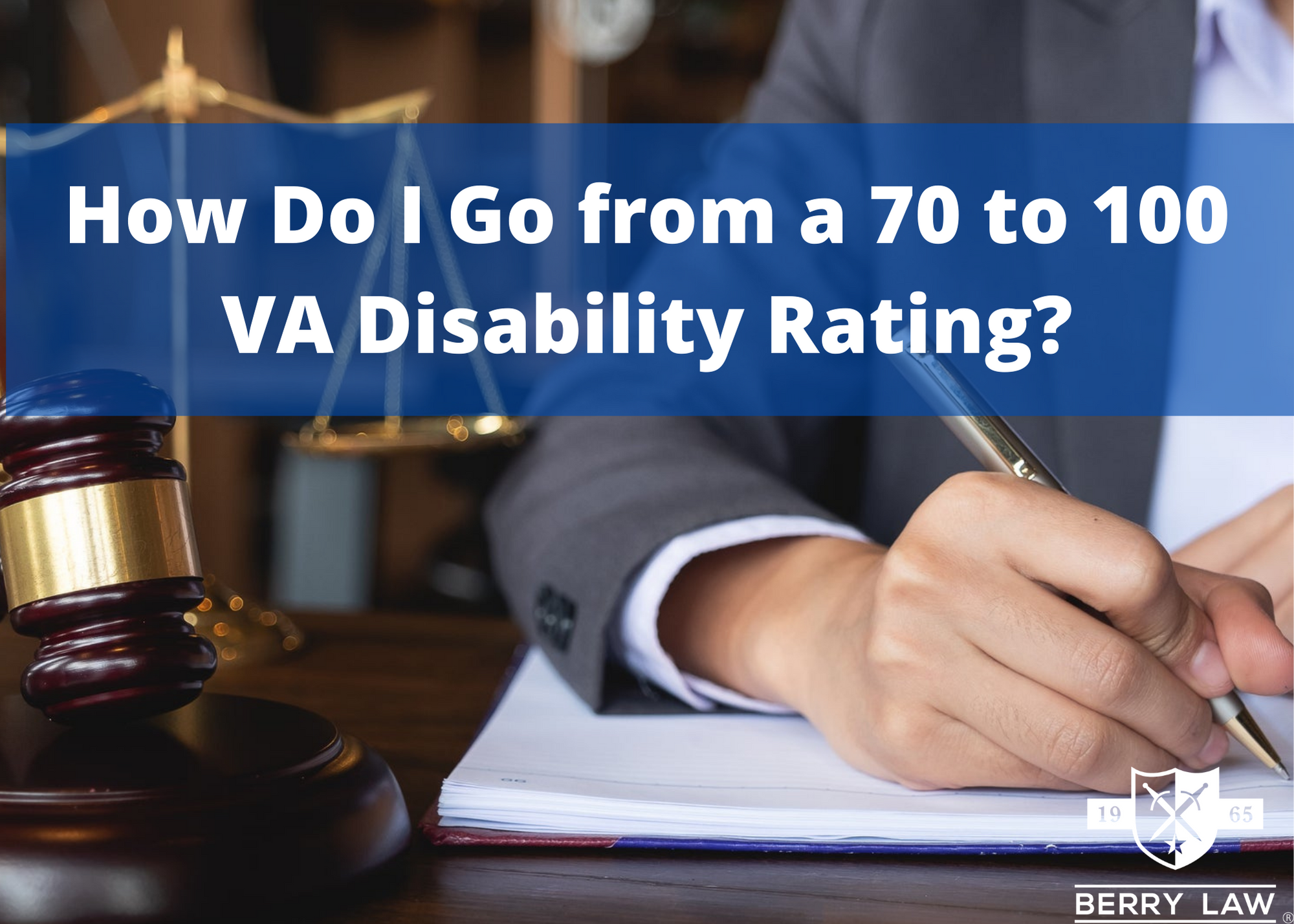
It can be frustrating for a veteran with multiple service-connected disabilities to go from a 70 to 100 VA disability rating. Because of how the VA combines claims, 1 plus 1 does not equal 2. VA Math is so complicated, a table is used to combine clams.
On top of the VA’s way of combining ratings, veterans must consider the prohibition against “pyramiding,” or applying the same symptom to multiple claims. For instance, if a veteran has both PTSD and Major Depressive Disorder, the VA will not apply the symptom of “flattened affect” to both of those conditions. It will only apply to one of them.
With that in mind, how can a Veteran reach 100% with multiple ratings?
First, veterans should look at the rating criteria for each individual claim. Disability rating schedules are published on the VA’s website, easily found by online search. The conditions are listed by a four-digit “diagnostic code,” which is listed on the last pages of each rating decision issued. Once the condition is located, it will appear as shown in the following example:
The condition provided in the example above is valvular heart disease, which has ratings evaluated at 10, 30, 60 and 100 percent disabling. Veterans can read symptoms and determine where, approximately, their conditions should be rated. If they are rated at 10 percent for valvular heart disease but they experience chronic congestive heart failure, they are probably rated too low.
A veteran’s VA examiner might fail to adequately evaluate a condition. A way to combat this is requesting an independent medical opinion from a private doctor. A veteran could also provide statements from friends or family who have witnessed symptoms first-hand.
If a veteran finds that one or more of his or her conditions are rated too low, they can file a claim to increase the VA rating 70% to 100% or file an appeal. If a year or more has passed since receiving a rating decision, the claim will need to be reopened. This is with new and material evidence. This can include reports from doctors or physical therapists, records from hospitalizations, statements from friends and family, or personal veteran statements.
If a veteran is unable to increase his or her claims because maximum ratings have been reached or symptoms do not warrant an increase, compensation may be increased if he or she is unable to work. This can be achieved through a claim for Individual Unemployability.
Requirements for Individual Unemployability:
When the VA grants Individual Unemployability, the veteran’s combined rating is treated as 100 percent without needing to increase individual claims.
To support a claim for Individual Unemployability, a veteran can submit new evidence.
Once a veteran reaches a 100 percent rating for disabilities, he or she is usually finished appealing. However, some veterans are so disabled that their condition is not accurately covered by a 100 percent rating. Those veterans need to look into special monthly compensation.
One of the most common types of special monthly compensation is SMC-S, or special monthly compensation based on housebound status. This is for veterans who have reached 100 percent overall and are either housebound due to service-connected conditions or could be rated at an additional 60 percent. Once a combined rating reaches 100 percent, if a veteran starts the count over using the combined ratings table and finds that the remaining claims add to 60 percent, he or she should be receiving special monthly compensation.
Berry Law was founded by John Stevens Berry Sr., Vietnam War veteran and trial attorney. Today, we count many military veterans among our attorneys and staff. We know what it means to serve and we know firsthand the struggles many of our clients face every day.
If you have received an inadequate rating decision from the VA and want to appeal, contact us today. Our team of veterans’ law attorneys is ready to help.
Our monthly newsletter features about important and up-to-date veterans' law news, keeping you informed about the changes that matter.